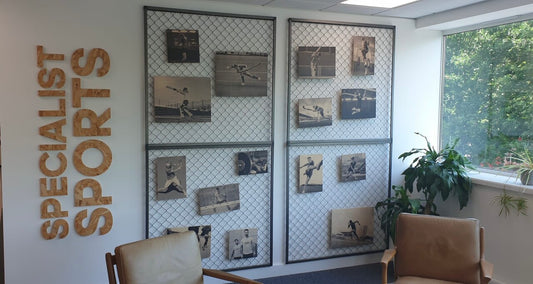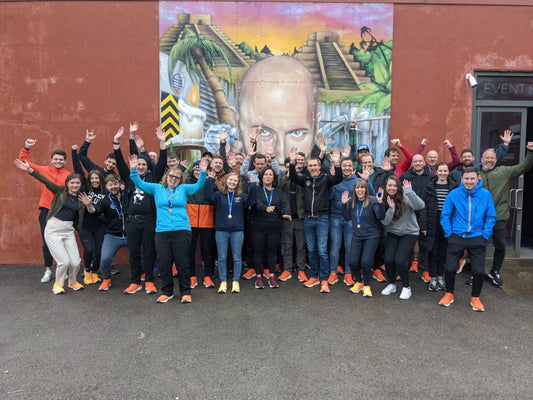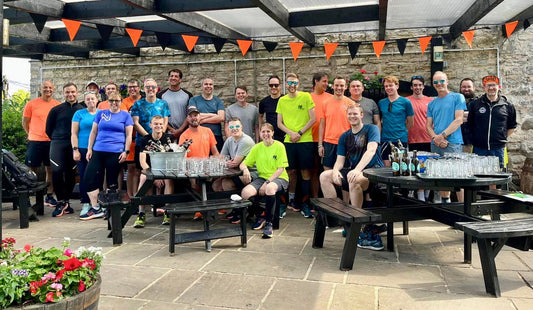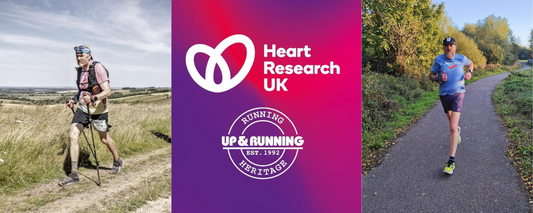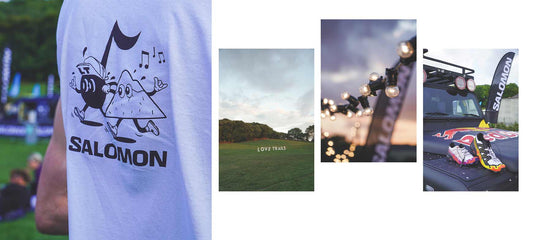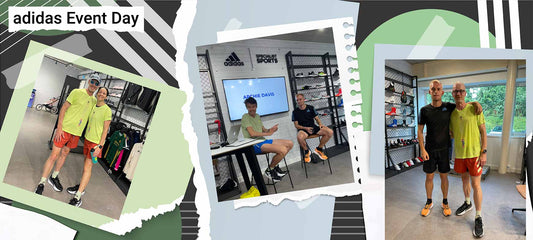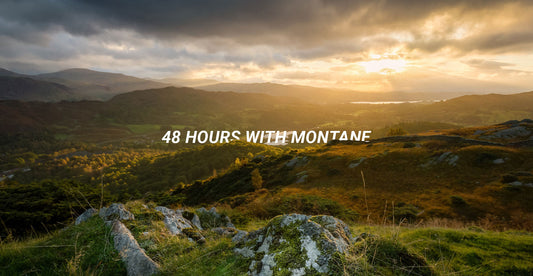Alex has been a member of staff with Up & Running for over 6 years working in Surbiton and Teddington stores. An integral part of the team, Alex has been a lifelong runner studying out in the US on scholarship at Lamar University. As we launch our charity partnership with Heart Research UK, a nonprofit which funds vital research into the treatment, prevention and cure of heart diseases. Alex has kindly shared his story of being diagnosed with a bicuspid valve and a dilated aortic root, through to the lifesaving treatment he received and why more research, awareness and prevention is needed to help more people in there battles with heart health.
My background
I’m a runner and have been running competitively since I was 13, I always thought of myself as being incredibly fit and rather arrogantly a little bit untouchable when it came to health. However, during the year before the pandemic, my performance in running and training was deteriorating. I thought I was deficient in iron, b12, or one of the many nutritional deficiencies that endurance athletes can regularly suffer from. After changing around training ideas and really being on top of supplements I continued to struggle.
It took a while for me to really investigate it further and when the pandemic hit, and lockdowns came about I just thought I’d rather not waste the NHS time.
It wasn’t until Christian Eriksen tragically collapsed at the Euros 2020 that really sparked and created a bit of urgency to find out why I was feeling the way I was. It was my thinking that he is probably tested very frequently and will be receiving incredible care within the professional football setup, and yet something that serious can be missed.
With the aftermath of lockdowns GP appointments were understandably hard to come by so I booked in for a private blood test to see if there was anything out of the ordinary. Before taking the bloods, the doctor heard a heart murmur and strongly advised I go and see my GP. When I made my way home, I scheduled an emergency GP appointment.
An ECG in the morning showed an irregular heartbeat, that same evening after many tests at the local hospital I was diagnosed with a bicuspid valve and a dilated aortic root, being told that I needed open heart surgery.
The bicuspid valve caused regurgitation which resulted in back flow of blood back into the chamber with every beat. The dilated aorta increased the risk of a tear in the lining of the heart. A bicuspid valve can be inherited meaning screening and raising awareness is incredibly important. This was quite a whirlwind of a week.
Symptoms
For me, the symptoms were felt mostly when I was exercising or when I was trying to sleep. During exercise my heart rate would spike, and the heart would begin palpitating. I mainly noticed this when I was racing and on some specifically hard training days. There were a few sleeping positions that made the heartbeat feel a bit odd, like I could hear and feel the beat in my head.
Once I found out that I had the bicuspid valve and the regurgitation it made sense as to why the symptoms were occurring.
The build up to my operation
I had a bit of trouble with the first scheduled surgery, a slight change in procedure coinciding with a well-timed covid outbreak in the ward meant it was cancelled last minute and delayed until the new year.
In the months leading into the surgery, I had nights where I couldn’t sleep, so I did what any sensible person would do and used this time to end up down a rabbit hole, reading journals and articles around the procedure and the recovery. For some reason I didn’t think that having open heart surgery would be a big deal, I was playing it down to family and friends as I had seen that the procedure was one that rarely had complications.
Of course, I was very wrong about it not being a big deal. I’m not embarrassed to say that I was in tears whilst I was being wheeled down the ward towards the operating theatre. This surgery had been consuming a lot of my day-to-day life for the 8 months prior and at that time it was only moments away.
The operation and the road to recovery
After a 9-hour operation I woke in the ICU.
The first 5 days in hospital were rough. Whist in the ICU I experienced a collapsed lung and repeated atrial fibrillation. Although these are common symptoms after having had surgery, these issues caused me to stay in the ICU a little longer than the nurses and doctors would have hoped. And due to Covid 19 procedures in place I couldn’t have any visitors come over the 6 days that I was in St Thomas Hospital, this likely caused my family and friends more stress than myself as I wasn’t in the clearest of minds whilst on the pain medication which was making my texts and phone calls tough to understand.
St Thomas hospital and the staff were brilliant. I was in the total unknown and they made everything as smooth as possible, they seemed to genuinely care which made all the difference when you are struggling. The consultant Mr Giovanni Luchesse did a truly incredible job; during the procedure he decided that the valve was in a condition that could be repaired instead of replacing it with a mechanical one. I was able to speak to Mr Luchesse before leaving the hospital and he guided me through what he did and how It went. To this day I am still in total awe with how surgeons can what they do, this is definitely to years of pioneering medical research, helping improve the treatment for patients.
Once I was back home each day got smoother, my resting heart rate surprisingly dropped quickly, and the wound was little work, healing nicely. My sternum however, had taken a beating, it needed to be cracked and opened for the surgery. This meant I had very little range of movement, making small tasks such as getting out of bed, sitting in a chair or just getting dressed incredibly difficult for the first 3 weeks or so. Luckily, I live with my partner, Sarah, who was able to do pretty much everything for me which I am forever grateful for.
I am very goal orientated so I set myself targets of activity to achieve. I wanted to be outside and moving everyday pretty much immediately from when I got back home. I started off with a 3-minute incredibly slow walk and as each day went by, I was able to increase the time on feet consistently. Not only did this help with my general mood, but I’m sure it was also helping with the sternum and chest recovery, allowing for the range of motion to come back.
Luckily my body reacted positively, and my overall health has been going well since the operation. With help from Up & Running and the team at my store I was able to really stagger getting back into work so I could drop days and move hours depending on how I was feeling and not have to stress about it. Exercise-wise I did a lot of walking and on Easter Sunday I did my first jog. I’m back jogging and running when I can albeit not to the intensity or duration before the surgery. But I’m sure it will come back in time. I haven’t experienced any symptoms that I had with the heart previously, so the outlook is good.
Why this partnership matters
I’m really looking forward to this partnership, obviously it is something that I have been personally affected by. My siblings and some of my mates have been checked as a result of me having problems, so if this new partnership can create awareness, increase heart screening opportunities, raise funds for even more vital research or just help with people getting support it will mean a great deal and will truly change and shape lives.
Up & Running have stores up and down the country and I hope that by sharing my story it can help all runners to get a screening if they feel something isn't right. The stores are right amongst local communities which will allow Heart Research UK to be front and centre in the effort to fight heart disease.
I’m excited to see what can be achieved together. Thank you for taking the time to read a bit about my story and experiences and for helping support Heart Research UK, if you would like to know more details on the partnership then click here.






